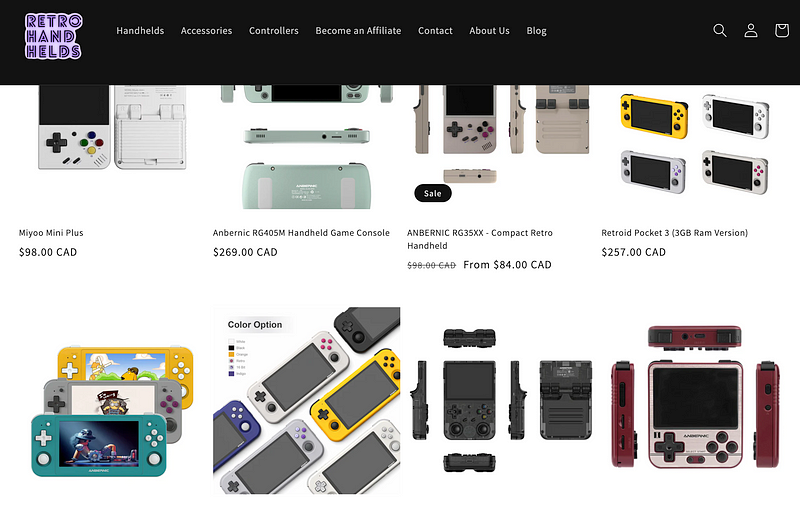# Should You Trust ChatGPT for Your Product Descriptions?
Written on
Chapter 1: Introduction to ChatGPT in E-Commerce
If you're considering using ChatGPT to create product descriptions for your online store, you may want to think twice. At the very least, you'll need to monitor the details it generates closely. Recently, I had ChatGPT write ten product descriptions for the soft relaunch of my online store, Retro Handhelds, and, as the title suggests, the outcome was far from perfect.
ChatGPT’s Initial Impressions Were Deceiving
To generate the product descriptions, I simply instructed ChatGPT with “Write a product description for [insert product name].” In under a minute, it produced several paragraphs of detailed text for each product. The process was incredibly straightforward!
This efficiency freed up valuable time for me to focus on other elements of my store. The writing was generally well-structured, presenting the products in a professional yet engaging manner. At first glance, the content appeared sufficiently polished.
However, I was cautious. I had heard enough stories about the inaccuracies of ChatGPT to avoid simply copying and pasting its output onto my website.

Chapter 2: The Flaws in ChatGPT’s Specifications
Upon reviewing the generated text, I anticipated that ChatGPT might misstate a few facts about the products. Some items on my site have variations, so I would understand if it mixed up details. Unfortunately, it barely got any information correct.
For instance, the Anbernic 405M, a retro gaming handheld, features a 4:3 aspect ratio—think of an old tube television. However, ChatGPT incorrectly claimed it had a 16:9 ratio, which is typical for modern widescreen TVs. In the context of retro gaming, this is a significant error!
The inaccuracies persisted throughout the descriptions. It misrepresented storage capacity, battery life, and online features. I took the time to correct these factual mistakes while retaining the overall text, as it still provided competent copy for my website.
Despite the errors, I chose to move forward. I realized that while ChatGPT would likely get many specifications wrong, if it continued to produce decent product descriptions, I could correct the inaccuracies. This approach would still save me time.
Section 2.1: Lack of Variety in Language
After requesting additional product descriptions from ChatGPT and stepping away for a few minutes, I returned to find the results… disappointing. The tool struggles with linguistic diversity.
Out of the ten descriptions I asked for, it repeated similar sentence structures and often regurgitated the same phrases. For example:

This repetition was evident, particularly in its frequent use of the phrase "Introducing." While it’s an excellent term for a new product, some of the handhelds I was describing had been on the market for at least two years, making that word inappropriate.
Chapter 3: Evaluating ChatGPT's Utility
Given the numerous issues identified, you might be surprised that I decided to retain much of the text ChatGPT produced for my online store. Although I performed extensive editing, and there’s still more to do, I found that it ultimately saved me time.
Keep in mind that using ChatGPT for product descriptions is not a matter of straightforward copy-and-paste. Significant editing is necessary, but if you're prepared to invest the effort, it can be a time-saver.
Retro Handhelds is just starting its relaunch, and we've seen a healthy number of sales, indicating that the product descriptions are performing adequately. As I expand the site with new products, it will be interesting to see how well ChatGPT manages additional tasks.
In summary, while ChatGPT’s product descriptions were filled with factual inaccuracies and repetitive language, they still contributed positively to my overall workflow.